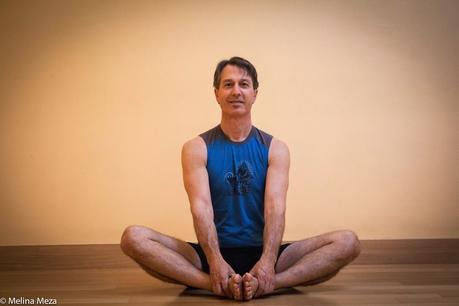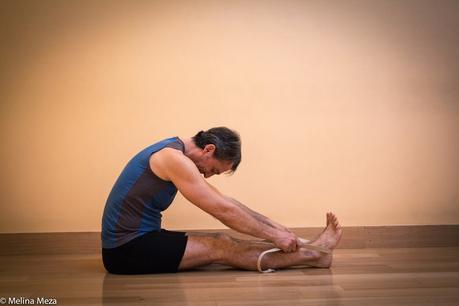 “I think it’s possible that we should not look at stretching so much as a way to make muscles longer, but instead view it as a way to make muscles stronger over a greater range of motion.” —James Speck
“I think it’s possible that we should not look at stretching so much as a way to make muscles longer, but instead view it as a way to make muscles stronger over a greater range of motion.” —James SpeckOf course we’ve all heard the cliché that yoga is “just stretching.” And anyone who has taken a few yoga classes knows better than that. Why just try holding Downward-Facing Dog pose (Adho Mukha Svanasana) for a couple of minutes. Or Side Plank (Vasithasana). Or even Warrior 1 (Virbradrasana 1).And when I thought about it for a while, I realized that many of the yoga poses I could come up with that involved stretching also had weight-bearing and strength building aspects as well, such as Triangle pose (Trikonasana) and Extended Hand to Toe pose (Utthita Hasta Padangusthasana). Think about it: even a simple stretching pose like Arms Overhead pose (Urdva Hastasana) is also strengthening your arms and upper body as raising arms above your head is resisting the pull of gravity. But the yoga asana repertoire does include many poses that are more passive stretches, such as seated hip openers, seated forward bends, supported backbends, and reclined stretching poses.
 So I was very intrigued to hear from Baxter in his post Friday Q&A: How to Stretch that even our passive stretching poses (Reclined Leg Stretch (Supta Padangusthasana), for example) are strengthening. I just had to look into it further. And I found out it may very well be that the way we typically think about stretching is wrong.
So I was very intrigued to hear from Baxter in his post Friday Q&A: How to Stretch that even our passive stretching poses (Reclined Leg Stretch (Supta Padangusthasana), for example) are strengthening. I just had to look into it further. And I found out it may very well be that the way we typically think about stretching is wrong.
In his article Stretching Is Really A Form of Strengthening, physical therapist James Speck says: "Stretching and strengthening are commonly considered two separate forms of exercise, but in many ways they could be considered the same activity:
- Similar active and passive tensile forces are present in both stretching and strengthening exercises
- The body’s response to stretching and strengthening is similar in terms of the mechanical activation of pathways that promote muscle growth
- Preliminary evidence suggests that regular stretching is able to promote muscle hypertrophy and muscular strength"
Speck proposes that stretching and strengthening muscles may actually be the same process because stretching and strengthening both:
- result in muscle hypertrophy
- stimulate the expression of growth factors
- impart similar tensile forces on muscles
- lead to increased muscular strength
Subscribe to Yoga for Healthy Aging by Email ° Follow Yoga for Healthy Aging on Facebook ° Join this site with Google Friend Connect

